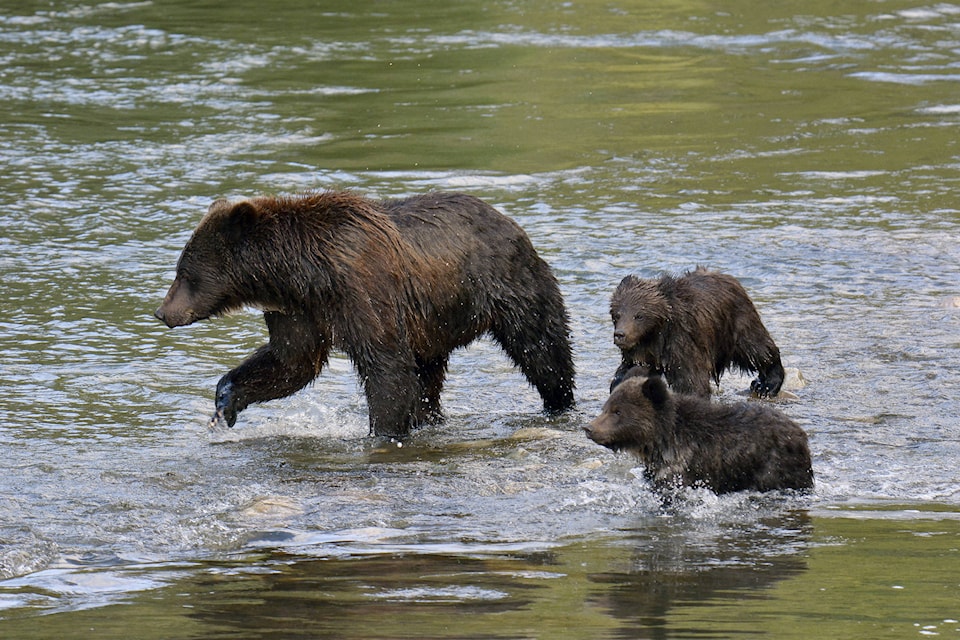An independent audit has found that the greatest risk to the province’s grizzly bear population is loss of habitat, not hunting.
The Office of the Auditor General of British Columbia released a new report on October 24 entitled “An Independent Audit of Grizzly Bear Management.”
The province says British Columbia is home to 15,000 grizzly bears, and it’s one of the last areas of North America where they live in their natural habitat.
“Out of the 56 grizzly bear populations, nine are threatened,” the Auditor-General’s report states. “The government’s primary objective for these is to recover them to sustainable levels. However, sustainable levels have not been defined and there have been limited recovery actions taken for these populations.”
The audit, which began 16 months ago, found that the provincial government made a profit off grizzly-hunting licenses, but invested only a fraction into research. The government also touted the creation of a recovery plan for threatened grizzlies in the North Cascades, a southwest B.C. mountain range, that was described as the “highest conservation priority.” However, Auditor General Carol Bellringer said the government failed to publicly disclose that the plan was never implemented.
The NDP government has pledged to end the trophy hunt after the 2017 season, but experts say this won’t make an impact unless habitats are protected. Ninety per cent of the funds raised through the sale of hunting licenses went into general revenue, Ms. Bellringer said, and not enough was spent on management of the population.
“Grizzly bear populations in some areas of B.C. are increasing, but this is likely happening independently from an adequate management framework,” said Bellringer. “The expansion of development in oil and gas, forestry and human settlement makes it more difficult for grizzly bears to mate, and results in food source loss, as well as more human-bear conflict.”
There are 600,000 kilometres of resource roads in the province and more are added every year. With more and more encroachment into grizzly territory, conflict with humans is inevitable and ultimately, grizzly bear deaths.
In response to the audit the province quickly stated that it would develop a provincial grizzly bear management plan with “clear objectives, roles, responsibilities and accountabilities.”
Bellringer’s report found that the overlapping responsibilities between the Ministry of the Environment and the Ministry of Forests, Lands and Natural Resource Operations were not well-managed, which resulted in both ministries failing to meet their commitments in regards to a grizzly bear management plan and the implementation of a recovery plan in the North Cascades.
Of interest to the Bella Coola Valley, the report noted that clear policies for bear viewing do not exist.
Bellringer had made ten recommendations in the audit and the province has pledged to adopt them all and states it will work with First Nations, natural resource industries, stakeholders and the public in implementing the auditor general’s recommendations.
Environment Minister George Heyman accepted the Auditor-General’s recommendations, and promised to deliver a grizzly-bear habitat plan, more dedicated funding to provide for additional conservation officers, plus a new “Species at Risk” law in 2018.
He said there is no new funding to add conservation officers in the current fiscal year, but promised that his government will tailor its resources to regions where they are needed most.
“We want to restore and increase transparency and public confidence in our ability to protect our natural environment, starting with this iconic species, the grizzly bear, that is so important to so many British Columbians,” he told reporters.
Doug Donaldson, Minister of Forests, Lands, Natural Resource Operations and Rural Development, echoed his colleague.
“As a new government, we agree that more needs to be done for this iconic species and to improve wildlife management overall in British Columbia, but we know that grizzly bears remain in 90 percent of their historic range,” said Donaldson.“We look forward to implementing the auditor general’s recommendations.”
